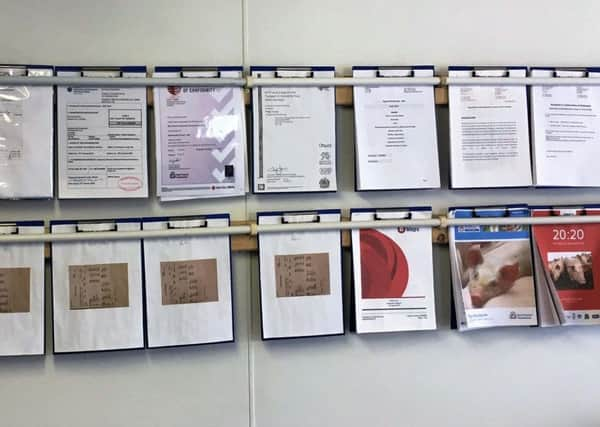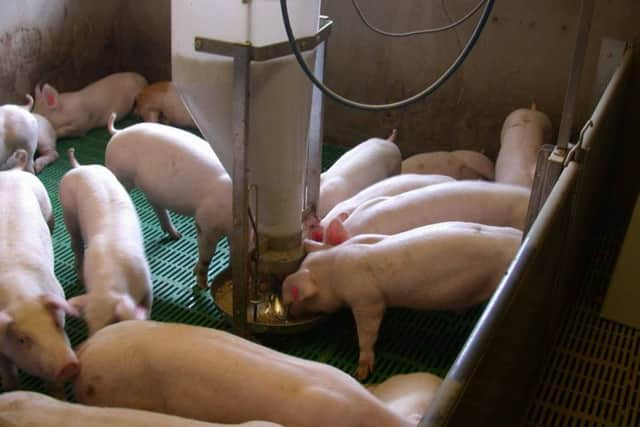DAERA Notes: Pigs


Red Tractor recently revised one of the animal medicine and husbandry procedures standards. The revised standard, AM.b, requires you to now download and save or print a copy of the ‘Practical Guide to Responsible Use of Antibiotics on Pig Farms’. You and any employees that inject pigs must read the document. If the document, which must also be signed by all who read it, is not available at inspection a non-conformance will be issued.
The practical guide offers advice on using antibiotics when your vet recommends them to be appropriate for your farm and health of your pigs. It stresses that ventilation, nutrition, water supply, housing, hygiene and biosecurity are well managed as they are crucial in controlling disease and reducing the need for antibiotics.
Advertisement
Hide AdAdvertisement
Hide AdWhere antibiotics are necessary the guide recommends how to use them responsibly to safeguard animal health and welfare. When used along with optimum management the measures aim to preserve the effectiveness of antibiotics for use in human and animal medicine. The guide can be found at: https://pork.ahdb.org.uk/media/276877/phwc-good-practice-guide-sep18-final-v2.pdf.


Benchmarking carcase quality
For the first four months of 2019 the average carcase weight of Northern Ireland pigs slaughtered was 90.2 kg. The average P2 was 12.1 mm, the weight variation 7.61 and the probe variation 2.06. How do these figures compare with those for your herd? A simple way of checking is to view the Pig Grading Information System (PiGIS) benchmarking reports. These reports, as well as providing information on the carcase quality of your pigs over any time period, allow you to compare your figures with, for example the top 10% or 25% of pigs slaughtered. If you are not one of the many pig farmers who already use PiGIS to monitor carcase quality you can register to use it through DAERA Online Services at: www.daera-ni.gov.uk/services/daera-online-services.
Food Chain Information
The Food Chain and Quality Assurance Scheme Information section on the pig movement document requires you to answer four questions. If the answer to question 2 ‘Are the Food Chain Information Statements on the reverse of the document satisfied?’ is ‘no’ you need to provide the factory with more information. This is particularly relevant if any pigs are showing signs of a disease or condition that may affect meat quality. The vet at the factory uses the information at ante-mortem to check if the batch of pigs is fit for slaughter. When answering this question record the number of all pigs with abnormalities. If there are several pigs with different abnormalities, for example tail bitten, hernias, lameness you need to note all of these pigs, not just some of them! Also record the colour of mark used to identify these pigs. The more information you can provide for the vet the better!
Something of interest!
If you are a regular reader of the pig management notes you will know that I often write about things of interest that I see during farm visits. During a recent visit to a Co Down farm I saw a very simple and easy to access way of keeping the numerous templates/policies/booklets etc. required for Quality Assurance. Each document is kept on a clip board, with all the clip boards displayed on a frame on the wall in the farm office (see photograph). Clips used to attach plastic piping to a timber frame leave enough space between the pipe and frame for the clip boards to slide down behind the pipe. This means the farmer (and inspector) can see at a glance where the documents are. It is a much more professional and impressive way of keeping paperwork than storing it in a biscuit tin or box!